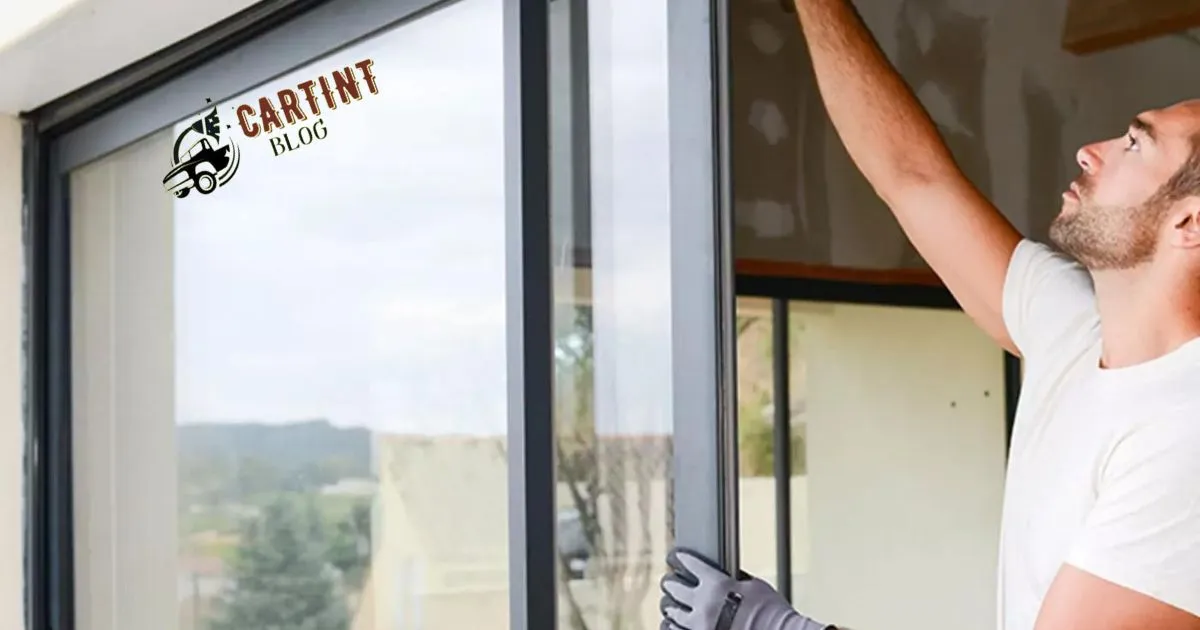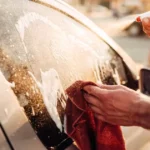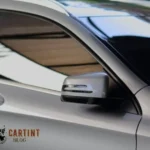Having overly tinted windows can cause problems when your car needs its routine inspection. Failing due to illegal tint levels is inconvenient and costly to fix, but there are steps you can take to increase your chances of passing. Understanding your state’s legal limits, properly preparing your car, and finding an inspection site that follows subjective rules flexibly are key.
The regulations on allowable tint levels vary from state to state. Key metrics inspectors look for are light transmittance percentages and any bubbling or damage that reduces visibility. As long as your tint meets the minimum light transmittance requirements and has no defects, you check the main legal boxes.
Being informed on your own state’s specifications, having documentation from your tint shop, and thoroughly cleaning your windows are good preventative actions.While passing is never 100% guaranteed, strategic preparation and finding the right inspection site can help you pass with tinted windows.
With Tinted Windows
Getting a vehicle to pass inspection with tinted windows outside of legal limits can be challenging. While some stations may overlook minor infractions, others strictly adhere to tint regulations. Being informed on state laws, finding flexible inspectors, and preparing documentation can help increase your chances of passing.
Understanding Tint Laws
- Tint legality is based on light transmittance percentages, which vary by state
- Requirements are more restrictive on windshields than side/rear windows
- Medical exemptions allow darker tint with proper documentation
- Subjectivity means some inspectors interpret regulations more strictly than others
The first step is knowing your state’s specific laws on allowable window tint. Restrictions are based on visible light transmittance (VLT) percentages, measuring how much external light can pass through the tinted glass. Requirements vary widely nationwide:
As shown, Florida is far more permissive of darker tint, while California limits vehicles to relatively light levels. Most states fall somewhere in between.
Additionally, windshield regulations are usually stricter than side and rear windows. Some states prohibit any tint on front windshields beyond what comes stock from the factory.
Beyond standard rules, every state allows medical exemptions for darker tint with proper documentation from a doctor. So if you have a medical condition impacted by sunlight, this provides an avenue to get legal approval for darker aftermarket tint.
While specific VLT percentages leave little room for interpretation, subjectivity still plays a role in inspections. Can You Tint Your Windows In Colorado? Just because a shop has passed your tint before doesn’t guarantee future success. And tint darkness that seems acceptable to you may look too dark to a strict inspector.
Getting consumer-grade VLT measurement tools can help assess your existing tint objectively. But human judgement means some stations will fail vehicles that technically meet requirements. There are no guarantees when subjectivity is involved.
Car Inspection With Tinted Windows
Tint laws vary in each state. They limit how dark windows can be. Limits are measured by visible light passing through. More light must pass through windshields.
Inspectors measure tint darkness. Too dark windows fail inspection. Some inspectors are very strict. Others allow darker tints. Medical exemptions let you have darker legal tint for health reasons.
To pass inspection:
- Check your state’s tint laws
- Get less dark tint if needed
- Try different inspection stations
- Keep paperwork showing your tint meets laws
- Remove tint if inspector says to
| State | Front Side Window Tint Limit | Back Side Window Tint Limit |
| Florida | 28% light passes through | 15% light passes through |
| California | 70% light passes through | 70% light passes through |
The table shows Florida allows much darker window tint than California. Knowing your state’s laws is important before inspection.
Finding Flexible Inspection Stations
- Ask tint shops for inspector recommendations
- Search forums/groups for stations known to allow darker tint
- Try small independent shops rather than high-volume chains
- Build rapport with sympathetic inspectors for future inspections
If your tint is borderline illegal or you want extra assurance of passing, seeking out flexible inspection stations is wise. The easiest route is asking tint shops for recommendations—they deal with customer inspection issues regularly and know which local stations have some leniency.
Barring shop advice, online car forums and Facebook groups for your city/state can provide crowdsourced guidance. Search past threads for the names of stations known to pass vehicles with darker tint. Some small independent shops relying on customer loyalty may overlook minor issues if you develop an ongoing relationship.
High-volume chain locations like Jiffy Lube cater to many one-off customers, so they tend to enforce regulations stringently to avoid liability or licensing issues. But smaller shops relying on repeat business have more incentive to keep customers happy. Finding a sympathetic inspector can pay dividends for future inspections too.
No guarantees exist when relying on inspector leniency though. Be prepared to remove tint if needed.
Preparing Documentation and Contingencies
- Gather paperwork like tint receipts showing existing VLT
- Test VLT percentages yourself with consumer measurement tools
- Be ready to remove tint if inspector insists
- Explore medical exemption options as a last resort
Even with station flexibility, preparing documentation demonstrating your tint meets legal requirements gives added legitimacy. The easiest is getting official receipts from your tint shop showing existing light transmittance levels. Even if they mismeasured initially, having paperwork shows proof you didn’t intentionally break laws.
DIY VLT measurement tools also provide concrete numbers to present. Inspectors may overlook their own readings if you have documentation backing up your compliance. Though again, subjectivity means they can still fail you despite numbers meeting regulations.
Being ready to remove window tint on the spot if an inspector insists is wise too. While not an ideal option, you can get the vehicle re-tinted after passing to mitigate summer heat issues. Having this contingency keeps you from being stuck with a failed inspection and the headache of returning another day.
Finally, exploring medical exemption options gives you an authorized avenue for darker legal tint if you run into trouble passing inspections. The process varies by state but typically requires getting certification from a doctor that darker windows are a medical necessity.
Will My Car Pass Inspection With Tinted Windows
Whether your car passes inspection depends on your state’s tint laws. The darkness of the tint is measured by how much light goes through. If the tint blocks too much light, it fails. Some inspectors allow darker tint than others. But there are no guarantees.
To increase chances of passing, check your state’s rules on tint. Get the lightest legal tint you can. Ask tint shops which inspection stations may allow darker tint. Have paperwork showing your tint meets the limits. Be ready to remove the tint if needed. Follow the laws and prepare backup plans before inspection. This makes passing with darker tint more likely.
Strategizing Based on Vehicle Type
- Trucks and commercial vehicles may get more leeway
- Older cars tend to attract less tint scrutiny
- Family vehicles face tougher restrictions for child safety
- Sports cars and limos are stereotypically associated with dark tint
Vehicle type plays a subtle role in tint enforcement as well. Lifted trucks, work vans, and commercial vehicles often get more leeway with darker tint, either due to inspector assumptions or practical sun protection needs,
Sports cars and limos face the opposite bias, with inspectors extra wary of illegal tint since those vehicles often push legal limits. High-end luxury cars also attract more scrutiny as owners are stereotyped as using tint purely for appearance rather than function.
Age can work in your favor too, with older vehicles drawing less attention to tint darkness unless clearly outside regulations. The assumption is that the older tint has naturally faded somewhat over time.
Inspectors tend to be most strict with family vehicles, as ability to see children inside relates to public safety. Minivans and SUVs with baby seats thus have less room for error than single cab work trucks, for example. But again, regulations themselves don’t differentiate based on vehicle type or age.
How To Pass Inspection With Tinted Windows Delaware
Delaware limits how dark tint can be on windows. No tint is allowed on the front windshield or front side windows. For other windows, any darkness is allowed. Inspectors check that tint laws are followed. They also look for window damage and clear vision.
To pass inspection in Delaware: Get no tint on the front windshield and front side windows. Make sure the other window tint has no damage or bubbles. Do not let tint block the driver’s vision. Keep the windshield clean with no large cracks. Have working wipers, mirrors, and lights. Follow these specific state rules. Then your car should pass inspection with tinted rear and back windows.
State-by-State Overview of Tint Laws
Tint legality ultimately comes down to your state’s VLT percentage requirements. Here is a breakdown of general limits in each state:
Alabama
- Windshield:Non-reflective tint allowed above AS-1 line
- Front Side Windows:32% VLT
- Back Side Windows:32% VLT
- Rear Window:32% VLT
Alaska
- Windshield:Non-reflective tint allowed above AS-1 line
- Front Side Windows:20% VLT
- Back Side Windows:20% VLT
- Rear Window:20% VLT
Arizona
- Windshield:Non-reflective tint allowed above AS-1 line
- Front Side Windows:33% VLT
- Back Side Windows:Any darkness allowed
- Rear Window:Any darkness allowed
Arkansas
- Windshield:No tint allowed
- Front Side Windows:25% VLT
- Back Side Windows:25% VLT
- Rear Window:25% VLT
California
- Windshield:Non-reflective 70% VLT tint allowed top 5 inches
- Front Side Windows:70% VLT
- Back Side Windows:70% VLT
- Rear Window:70% VLT
Colorado
- Windshield:Non-reflective tint allowed top 4 inches
- Front Side Windows:27% VLT
- Back Side Windows:27% VLT
- Rear Window:27% VLT
Connecticut
- Windshield:Non-reflective tint allowed top 4 inches
- Front Side Windows:35% VLT
- Back Side Windows:35% VLT
- Rear Window:35% VLT
Delaware
- Windshield:Non-reflective tint allowed top 5 inches
- Front Side Windows:35% VLT
- Back Side Windows:35% VLT
- Rear Window:35% VLT
Florida
- Windshield:Non-reflective tint allowed above AS-1 line
- Front Side Windows:28% VLT
- Back Side Windows:15% VLT
- Rear Window:15% VLT
Georgia
- Windshield:Non-reflective tint allowed top 5 inches
- Front Side Windows:32% VLT
- Back Side Windows:32% VLT
- Rear Window:32% VLT
Hawaii
- Windshield:Non-reflective tint allowed top 5 inches
- Front Side Windows:35% VLT
- Back Side Windows:35% VLT
- Rear Window:35% VLT
Idaho
- Windshield:Non-reflective tint allowed top 5 inches
- Front Side Windows:35% VLT
- Back Side Windows:35% VLT
- Rear Window:35% VLT
Illinois
- Windshield:Non-reflective tint allowed top 5 inches
- Front Side Windows:35% VLT
- Back Side Windows:35% VLT
- Rear Window:35% VLT
Indiana
- Windshield:Non-reflective tint allowed top 7 inches
- Front Side Windows:30% VLT
- Back Side Windows:30% VLT
- Rear Window:30% VLT
Iowa
- Windshield:Non-reflective tint allowed top 6 inches
- Front Side Windows:70% VLT
- Back Side Windows:70% VLT
- Rear Window:70% VLT
Kansas
- Windshield:Non-reflective tint allowed top 5 inches
- Front Side Windows:35% VLT
- Back Side Windows:35% VLT
- Rear Window:35% VLT
Kentucky
- Windshield:Non-reflective tint allowed top 5 inches
- Front Side Windows:35% VLT
- Back Side Windows:18% VLT
- Rear Window:18% VLT
Louisiana
- Windshield:Non-reflective tint allowed top 5 inches
- Front Side Windows:40% VLT
- Back Side Windows:40% VLT
- Rear Window:40% VLT
Maine
- Windshield:Non-reflective tint allowed top 5 inches
- Front Side Windows:35% VLT
- Back Side Windows:35% VLT
- Rear Window:35% VLT
Maryland
- Windshield:Non-reflective tint allowed top 4 inches
- Front Side Windows:35% VLT
- Back Side Windows:35% VLT
- Rear Window:35% VLT
Massachusetts
- Windshield:Non-reflective tint allowed top 5 inches
- Front Side Windows:35% VLT
- Back Side Windows:35% VLT
- Rear Window:35% VLT
Michigan
- Windshield:Non-reflective tint allowed top 4 inches
- Front Side Windows:35% VLT
- Back Side Windows:35% VLT
- Rear Window:35% VLT
Minnesota
- Windshield:Non-reflective tint allowed top 4 inches
- Front Side Windows:50% VLT
- Back Side Windows:50% VLT
- Rear Window:50% VLT
Mississippi
- Windshield:Non-reflective tint allowed top 6 inches
- Front Side Windows:25% VLT
- Back Side Windows:25% VLT
- Rear Window:25% VLT
Missouri
- Windshield:No restrictions
- Front Side Windows:35% VLT
- Back Side Windows:35% VLT
- Rear Window:35% VLT
Montana
- Windshield:Non-reflective tint allowed top 4 inches
- Front Side Windows:35% VLT
- Back Side Windows:35% VLT
- Rear Window:35% VLT
Nebraska
- Windshield:Non-reflective tint allowed top 5 inches
- Front Side Windows:35% VLT
- Back Side Windows:35% VLT
- Rear Window:35% VLT
Nevada
- Windshield:Non-reflective tint allowed top 5 inches
- Front Side Windows:35% VLT
- Back Side Windows:Any darkness allowed
- Rear Window:Any darkness allowed
New Hampshire
- Windshield:Non-reflective tint allowed top 5 inches
- Front Side Windows:35% VLT
- Back
Frequently Asked Question
Is there a way to pass inspection with an illegal tint?
Some inspection stations may overlook minor tint infractions if you build rapport, but there are no guarantees when rules are broken.
What percentage of light blockage fails inspection?
Tint legality is based on a percentage of visible light that must pass through – so if your windows block too much light, they fail. Limits vary by state.
Can I get a medical exemption for darker tints?
Yes, all states allow medical exemptions for darker legal tint if you get doctor certification it’s a medical necessity.
What if my tint looks darker than it measures?
Even if your tint technically meets light transmittance limits, some inspectors judge darkness subjectively and can still fail you.
Will old tint be held to current standards?
Yes, inspectors don’t grandfather in old tint – no matter how long it’s been installed, it must meet current legal light passage percentages.
Conclusion
Passing inspection with an illegal tint can be challenging. The rules vary in each state based on how much light must get through the windows. Inspectors look at tint darkness subjectively. Some will fail vehicles that technically meet the limits.
You can try finding flexible inspection stations. But ultimately, the only guarantee is getting legal tint levels for your state. Checking specific light transmittance regulations is the first step. Ask tint shops to recommend inspectors known to allow darker tint.
Have paperwork showing your existing tint meets laws. Be ready to remove tint on the spot if needed. And consider getting a medical exemption if you qualify. Preparing contingency plans increases your chances of passing. But for guaranteed success, legal compliance with your state’s tint restrictions is essential.
aa





